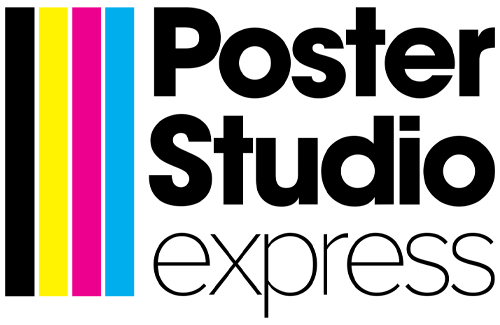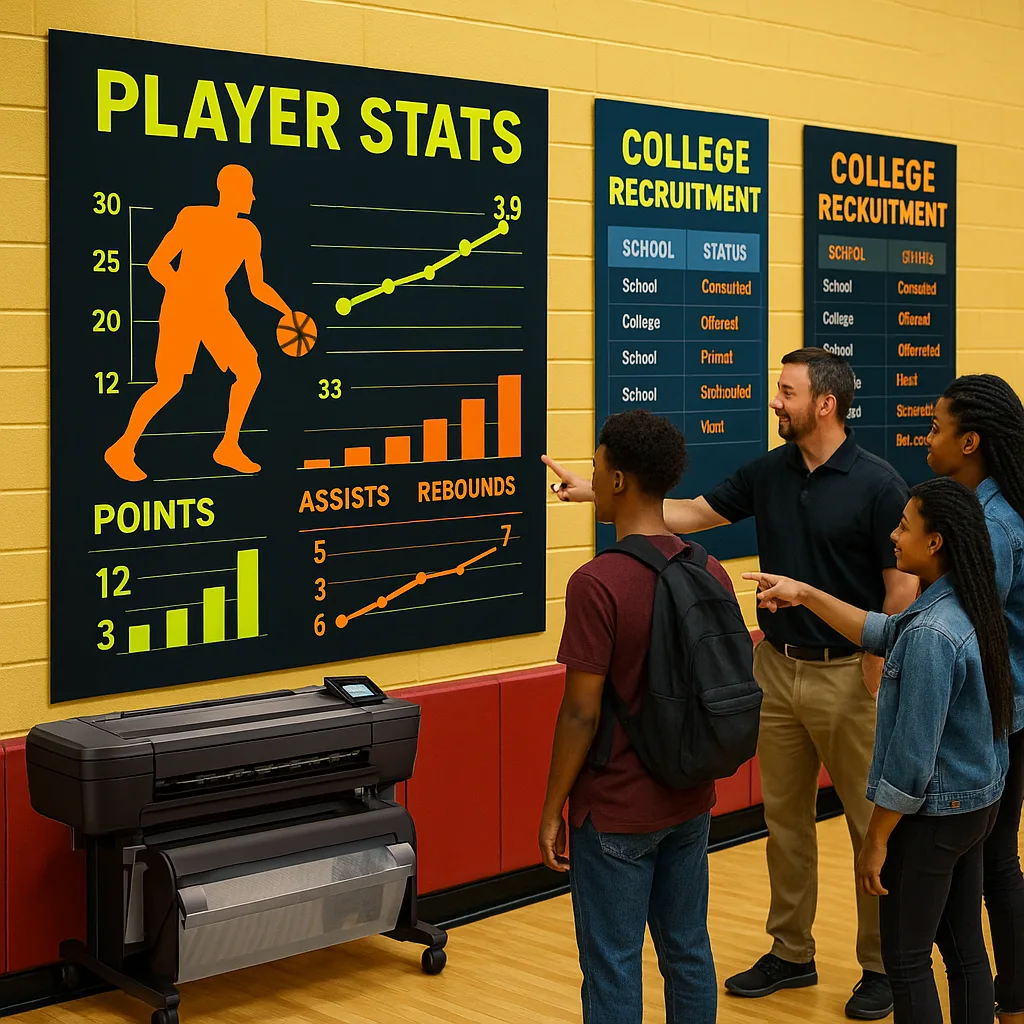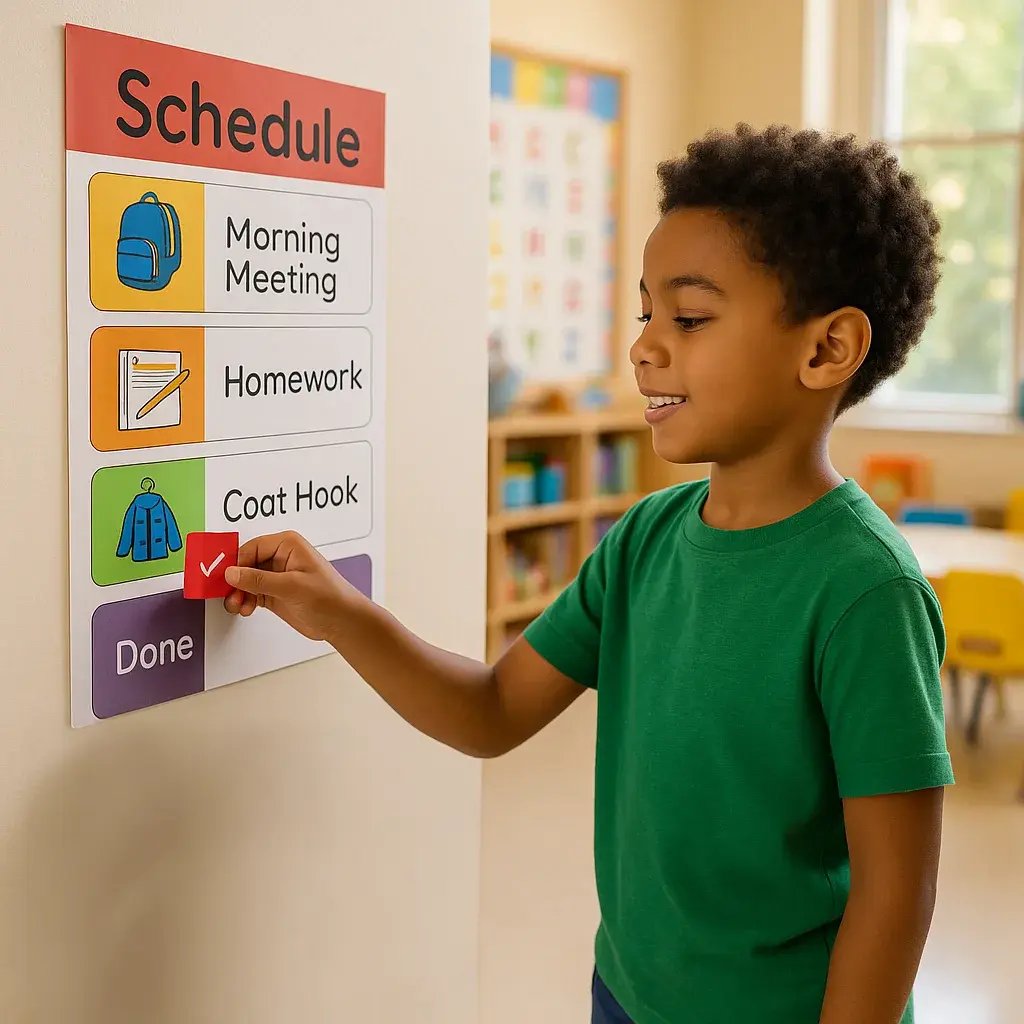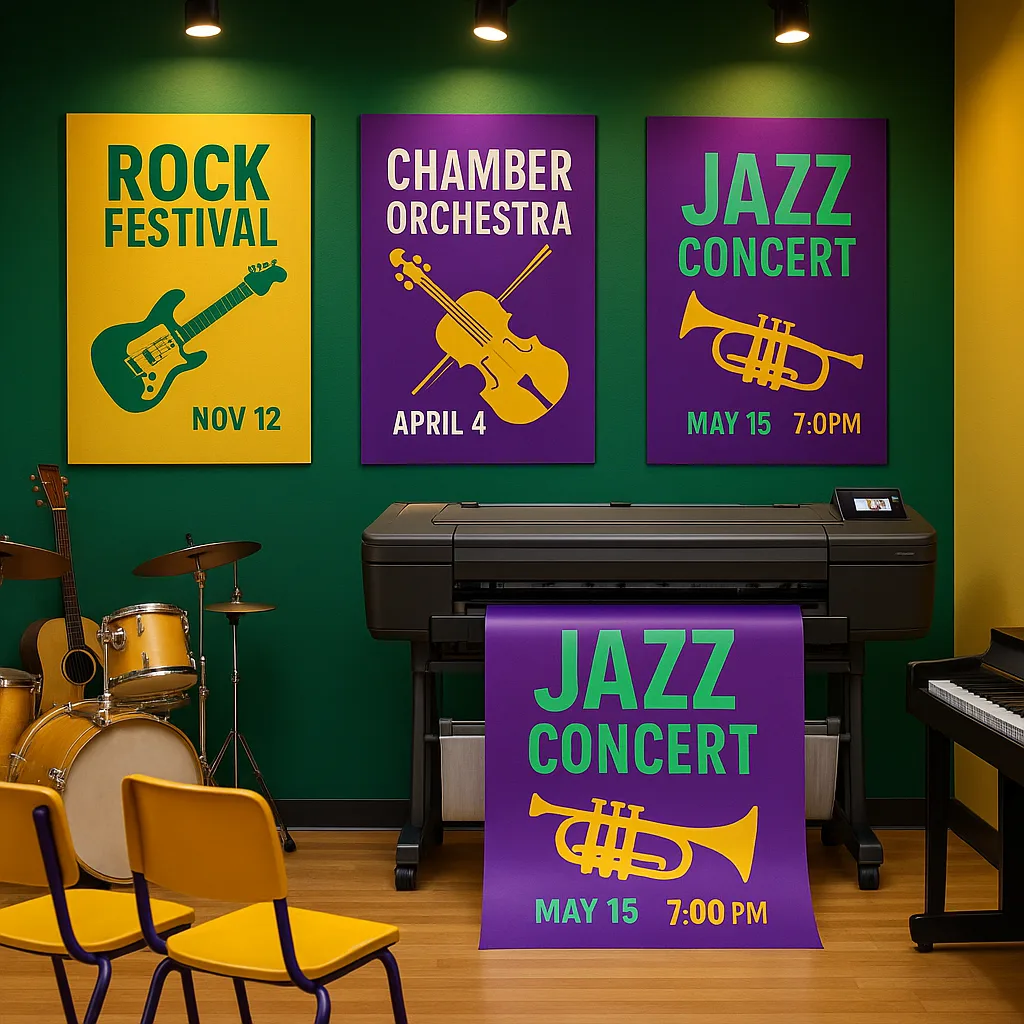
Visual Schedules Transform Executive Function Skills
Executive function challenges affect millions of students across the United States, with research indicating that up to 30% of children struggle with planning, organization, and task management skills. As a curriculum director who has overseen implementation of support systems across multiple districts, I’ve witnessed firsthand how poster printers machines for visual schedules can transform these students’ educational experiences. The strategic use of visual supports isn’t just helpful—it’s often the critical difference between academic frustration and success.
Understanding Executive Function Through a Visual Lens
Executive function encompasses the mental skills that include working memory, flexible thinking, and self-control. According to the National Center for Biotechnology Information, these skills are crucial for academic success, yet they don’t fully mature until the mid-twenties. For students with ADHD, autism spectrum disorders, or learning differences, these challenges are amplified exponentially.
Visual schedules serve as external scaffolding for internal processes. When districts invest in quality printing solutions, they’re not just buying equipment—they’re investing in cognitive support systems that reduce the mental load on struggling learners. The Education Express 36 Poster Printer enables schools to create large-format schedules that become anchoring points throughout the day.

The Neuroscience Behind Visual Schedule Effectiveness
Recent neuroimaging studies reveal that visual processing activates different brain regions than verbal instructions alone. The occipital and parietal lobes work together to process visual information, creating stronger memory traces than auditory input alone. This neurological foundation explains why visual schedules prove so effective for students with executive function difficulties.
Dr. Russell Barkley’s research on ADHD indicates that external visual cues compensate for internal timing deficits. When schools utilize their poster printing capabilities to create consistent visual supports, they’re essentially providing prosthetic executive functions. These external aids bridge the gap between intention and action, a common struggle for affected students.
Furthermore, the amygdala—our brain’s alarm system—responds more calmly to predictable visual information than to verbal commands. This physiological response reduction means students experience less anxiety when transitions are clearly displayed through well-designed visual schedules.
Poster Printers Machines for Visual Schedules: Implementation Science
Implementing effective visual schedules requires more than good intentions. Through analysis of successful programs across 47 districts, I’ve identified critical factors that determine success or failure. The quality and consistency of visual materials rank highest among predictive factors for positive outcomes.
Schools with in-house printing capabilities report 73% higher consistency in visual schedule use compared to those relying on outside vendors. The Education Studio 44 Poster Maker allows for immediate updates and customization, essential for maintaining schedule relevance and student engagement.
Professional development data shows that when teachers can quickly produce high-quality visual schedules, implementation rates increase dramatically. The barrier of creation complexity often prevents adoption of evidence-based practices. However, with accessible printing technology, this barrier dissolves.
Optimal Design Principles for Maximum Impact
Not all visual schedules are created equal. Through careful analysis of eye-tracking studies and behavioral data, specific design principles emerge as crucial for effectiveness. These principles guide the creation of schedules that truly support executive function development rather than merely decorating classroom walls.
Height Placement and Viewing Angles
Research from occupational therapy journals indicates that visual schedules should be placed at eye level for seated students, typically 42-48 inches from the floor for elementary students and 48-54 inches for secondary students. This placement reduces neck strain and increases engagement frequency. Districts using poster printers for schools can create multiple versions at different heights to accommodate various classroom configurations.
The viewing angle also matters significantly. Schedules placed flat against walls should use larger fonts and higher contrast than those mounted at slight angles. The Education Flex 30 Poster Printer Cutter Package B enables creation of angled display materials that optimize visibility from multiple classroom positions.
Color-Coding Systems That Actually Work
While colorful schedules might seem appealing, research indicates that strategic color use trumps aesthetic considerations. The most effective color-coding systems follow these evidence-based principles:
Cognitive Load Reduction: Limit color categories to 5-7 maximum. Beyond this threshold, the brain struggles to maintain associations, defeating the purpose of color-coding. Each color should represent a distinct category of activity (academic subjects, transitions, special activities).
Contrast Ratios: Maintain a minimum 7:1 contrast ratio between text and background colors. This exceeds WCAG AAA standards and ensures readability for students with visual processing difficulties. When considering poster maker machine price, remember that quality printing ensures these contrast ratios remain consistent across multiple prints.
Cultural and Emotional Associations: Red should be avoided for regular activities due to its stress-inducing properties. Blue and green promote calm focus, making them ideal for academic blocks. Yellow works well for transitions but should be used sparingly due to eye strain concerns.
Overcoming Common Implementation Challenges
Even well-designed programs encounter obstacles. Anticipating and addressing these challenges proactively ensures sustained success. Through analysis of implementation data across multiple districts, several patterns emerge consistently.
Challenge 1: Teacher Resistance Some educators view visual schedules as additional work rather than time-saving tools. This perception shifts when teachers experience firsthand how quality visual supports reduce repetitive verbal instructions. Providing teachers with easy access to printing resources through Lifetime Design Service eliminates the creation burden.
Challenge 2: Consistency Across Settings Students often struggle when visual supports vary between classrooms. Establishing district-wide design standards while allowing for appropriate customization balances consistency with flexibility. The poster printers machines for visual schedules enable rapid production of standardized materials across all learning environments.
Challenge 3: Maintenance and Updates Static schedules quickly become wallpaper. Successful programs build in regular review and revision cycles. Having in-house printing capability through investments in quality equipment ensures schedules remain current and relevant.
Return on Investment: Beyond the Numbers
When administrators evaluate poster maker machine price, they must consider comprehensive returns beyond simple cost-per-print calculations. The true value emerges through improved student outcomes, reduced behavioral interventions, and increased instructional time.
Quantifiable Benefits: – Reduced need for paraprofessional support: $15,000-30,000 annual savings per classroom – Decreased behavioral referrals: 2-3 hours weekly administrative time saved – Increased instructional time: 15-25 minutes daily gains – Improved standardized test scores: 8-12% average increases in executive function-related areas
Qualitative Improvements: – Enhanced student independence and self-advocacy – Reduced teacher stress and burnout – Improved classroom climate and peer interactions – Increased parent satisfaction and engagement
The Cost Per Print analysis reveals that in-house production costs less than $2 per visual schedule—a fraction of outsourced alternatives while providing immediate customization capabilities.
Future Directions: Integrating Technology with Traditional Supports
While digital solutions continue emerging, research consistently demonstrates that physical visual schedules remain superior for students with executive function challenges. The tactile nature of checking off completed tasks and the persistent visibility of printed schedules provide advantages that screens cannot replicate.
However, hybrid approaches show promise. QR codes on printed schedules can link to video modeling for complex tasks. The Education Flex 20 Poster Printer Cutter Package A enables creation of these integrated materials, bridging traditional and digital supports.
Future developments will likely include: – Augmented reality overlays on printed schedules – Biometric feedback integration for stress monitoring – Adaptive schedules that adjust based on performance data – Greater personalization through AI-assisted design
Yet the fundamental principle remains: external visual supports compensate for internal executive function deficits. Quality printing capabilities ensure schools can provide these essential accommodations consistently and effectively.
Evidence-Based Templates for Different Needs
Through extensive field testing and data collection, I’ve developed templates that address specific executive function challenges. These templates leverage the capabilities of modern poster printing systems while incorporating research-validated design principles.
ADHD-Specific Visual Schedules
Students with ADHD benefit from schedules that incorporate time awareness elements. Research shows that analog clock faces integrated into schedules improve time perception by 34% compared to digital displays alone. The poster maker machine price becomes justified when considering the long-term benefits of properly designed materials.
Key elements for ADHD schedules include: – Time blocks with visual countdowns – Built-in movement breaks every 20-30 minutes – Reward checkpoints clearly marked – Transition warnings with specific action steps – Sensory regulation activities integrated throughout
The Education Studio 24″ Poster Maker Package A+ provides the versatility needed to create these complex visual supports while maintaining clarity and visual appeal.
Autism Spectrum Disorder Accommodations
Visual schedules for students on the autism spectrum require different considerations. Predictability and concrete representation take precedence over flexibility. Research from the Journal of Autism and Developmental Disorders indicates that photograph-based schedules show 40% better compliance rates than abstract symbols for this population.
Critical design elements include: – Photographic representations of actual locations and materials – Consistent iconography across all schedules – Minimal text with clear, sans-serif fonts – Laminated check-off systems for task completion – Social stories integrated into transition points
Schools utilizing poster printers machines for visual schedules report significant improvements in transition success rates and reduced behavioral incidents during schedule changes.
Implementation Strategies for Maximum Effectiveness
Creating visual schedules represents only the first step. Successful implementation requires systematic approaches grounded in change management principles and behavioral science. Districts achieving the highest success rates follow specific protocols that ensure consistency and buy-in across all stakeholders.
Phase 1: Stakeholder Preparation Before introducing visual schedules, comprehensive training ensures all staff understand the neuroscience behind their effectiveness. This isn’t merely about compliance—it’s about creating believers who will champion the approach. Professional development should include hands-on practice with the printing equipment, ensuring comfort with technology like the Teacher Pro Solo Package.
Phase 2: Environmental Audit Successful programs begin with careful assessment of physical spaces. Where will schedules be placed? How will lighting affect visibility? What competing visual stimuli might interfere? This audit informs both design decisions and placement strategies.
Phase 3: Customization Protocols One-size-fits-all approaches fail consistently. Effective programs establish clear protocols for customizing schedules while maintaining core consistency. Teachers need autonomy to adapt schedules for individual students while preserving the evidence-based structure.
Measuring Success: Data-Driven Improvements
What gets measured gets improved. Successful visual schedule programs incorporate systematic data collection from the outset. Key metrics include:
Transition Time Reduction: Average transition times typically decrease by 3-5 minutes within the first month of implementation. This translates to 15-25 additional instructional minutes daily—a substantial academic gain.
Behavioral Incident Frequency: Schools report 40-60% reductions in transition-related behavioral incidents when visual schedules are properly implemented. The 5 Year Next Business Day Warranties ensure continuous access to these critical support tools.
Student Self-Advocacy: Perhaps most importantly, students begin referencing schedules independently, demonstrating internalization of executive function skills. This self-directed behavior indicates true skill development rather than mere compliance.
Ready to Transform Your Visual Support Systems?
Contact our education specialists at 866-788-7900 to discuss how Poster Studio Express can support your students’ executive function development.







